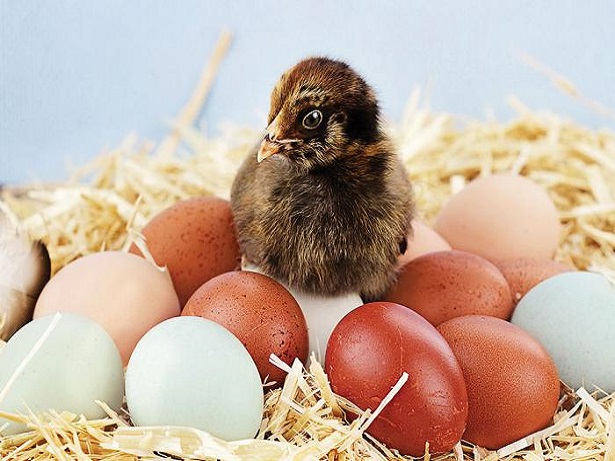Nutrition
“If the pullets have missed target weight it is not necessarily because of a lack of food, and, therefore, it is not usually necessary to provide more but to increase the number of feeds per day,” Dr Garton says. More frequent feeds will reduce the dominant birds gorging on food and give weaker birds more opportunity to feed.
The food consistency is also important. A meal or mash overcomes the likelihood of the hens picking out grains or larger pieces and provides better distribution of the micronutrients calcium and phosphorous.
Calcium
As the hen progresses beyond peak lay, ensuring calcium is available for egg shell production is vital.
Many flock managers now split-feed with a higher calcium mix offered in the afternoon. The theory is that calcium provision is matched to the peak demand on reserves while the egg is forming overnight.
Without this, the bone reservoir will be quickly depleted causing layer fatigue or osteoporosis later in their lives.

Fibre
Dietary fibre is also key to the pullet’s development and should be offered at an inclusion rate of about 4-5% to maintain gut function and health. One way of doing that, and enriching the birds’ environment at the same time, is to introduce lucerne hay bales. This has a potential to prevent or reduce feather pecking. The ideal time to introduce the bales is at about 4-6 weeks – any earlier and the birds will ignore it as a background feature and the benefits will be lost.
Water
Arguably, water is the forgotten element of nutrition. Eggs comprise 70% water, so there is a high metabolic demand that must be met as the pullet approaches point-of-lay.
Good quality, clean water is also a route that can be used to provide additional micronutrients.
Disease prevention
About 16 vaccines are delivered in the first 16 weeks of life. These are delivered via aerosol or in drinking water as a live virus to stimulate the young hen’s antibody response. To boost those levels a killed, inactivated vaccine booster is provided at the end of the rearing stage.
To assess the level of protection gained from the live viruses,it is a good idea to take blood samples at 12 weeks old. Any shortfall in response can then be investigated.




